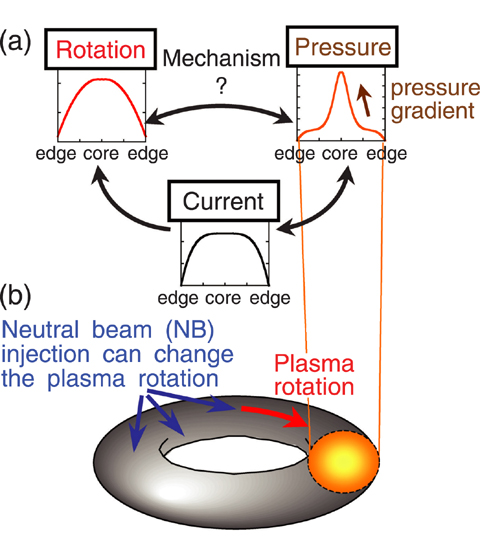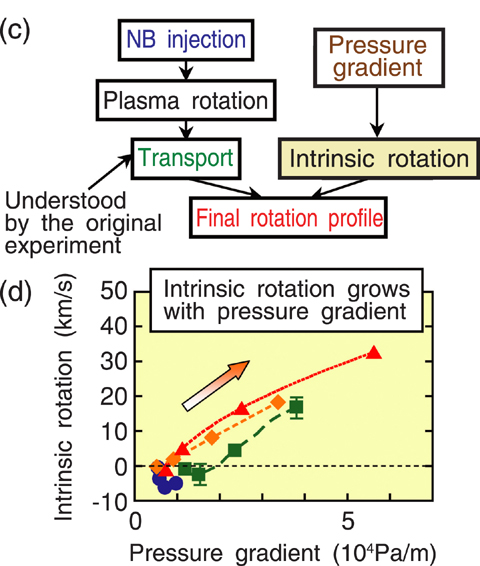
Fig.3-4
(a) Schematic view of self-regulating high pressure plasma
(b) Schematic drawing of JT-60 plasma

Fig.3-5
(c) Formation mechanism of the rotation profile
(d) Relation between the intrinsic rotation and the pressure gradient
Burning plasmas for nuclear fusion reactors are highly self-regulating, governed by strong linkage among plasma pressure, electric current, and rotation profiles as shown in Fig.3-4(a). To construct fusion reactors, it is essential to understand and control this self-regulating system. However, it has been an open critical issue for nuclear fusion research worldwide to understand the formation mechanism of the rotation profile and the relation between the rotation and pressure profiles. The rotation profiles are determined by various mechanisms: (1) the external torque input by neutral beams (NBs), (2) the momentum transport, and (3) the intrinsic rotation. However, these terms cannot be evaluated separately by the conventional steady-state-experiment and analysis.
In order to address this issue, we newly developed and applied an experimental method utilizing the modulation of a part of the NBs, and as a result we evaluated the momentum transport correctly. At low plasma pressure, it was found that the rotation profiles are determined by the external torque applied by the NBs and the momentum transport. At higher plasma pressures, the self-regulation appeared. In this case, we found that the measured rotation profiles cannot be explained merely by the momentum transport and the external momentum input from the NBs, and the intrinsic rotation becomes dominant. The relation found between the plasma pressure gradient and the intrinsic rotation in various confinement modes is shown in Fig.3-5(c). It was experimentally found for the first time that the intrinsic rotation grows with increase in the pressure gradient in all cases. This study enables us to understand the mechanism of the intrinsic rotation in high pressure and highly self-regulating plasmas, and gives important information about the prediction and operation of the self-regulation plasmas in ITER and other future fusion reactors.